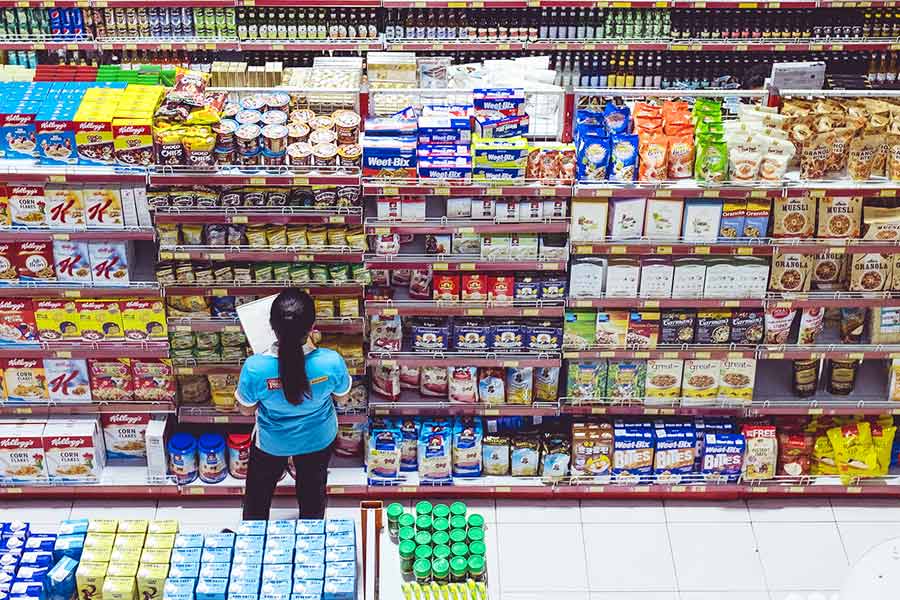Resources - Blog
Feedvisor Prepares for Groceryshop: What Your Brand Should Know

Stay on top of the latest e-commerce and marketplace trends.
It has been over a year since Amazon acquired Whole Foods for nearly $14 billion. With Whole Foods, Prime Pantry, Amazon Fresh, and the company’s increasing number of private label brands in the food and beverage category, their constantly expanding role in the future of grocery is clear. Amazon has applied their customer-first model to their grocery delivery options, with many companies following in their footsteps to appeal to consumers who prefer convenience over an in-store experience.
At the end of the month, Feedvisor will be exhibiting at Groceryshop, a three-day conference that will be dedicated to intricate conversations of this nature. Geared toward enterprise and startup CPG brands, supermarkets and grocers, convenience stores, drug stores, e-commerce solutions providers, warehouse clubs, and non-traditional grocery retailers, the event will showcase impactful keynotes and three distinct speaker tracks so attendees can customize their experience according to their interests and specific businesses.
With themes ranging from disruptive new trends and technologies to the evolution of brands and shopping experiences, attendees will receive tactical insights and best practices related to the evolution of how consumers shop for products in target categories such as food and beverage, health, personal care, and household items.
Feedvisor’s Findings
In preparation for Groceryshop, Feedvisor’s in-house data scientists and engineers performed some preliminary analysis on the grocery category. We discovered that the top five grocery sub-categories are as follows: coffee, tea, beverages, K-Cups, and fruit juice. Of the 13K+ brands that dominate the grocery category, the top 1K brands are responsible for the vast majority of the category sales, nearly 90%. When broken down even further, the sales distribution within the top 1K brands falls heavily in the top 100 brands, who are making over 50% of the sales.
Next, with regard to merchants, Feedvisor uncovered that the larger the brand is, the more distinct merchants it tends to have. For example, there can be 200 merchants each selling the same brand. For the brand with the top sales volume involved in our analysis, there are over 1,200 distinct merchants selling it. To note, there are exceptions to this rule of thumb. When it comes to the number of distinct brands per merchant, our analysis reveals that the higher the merchant’s total sales volume, the more brands they are likely to sell. For example, the merchant with the highest sales volume sells about 700 distinct brands.
Feedvisor also looked to see if there was a correlation that could be drawn between product rating and merchants. The data revealed a downward trend — the more merchants there are that sell your products, the lower the product ratings will be for your products. With an increase in merchants, you have less control of your brand and greater chances of service interruptions, such as by not adhering to content guidelines, uncovering a hiccup in the supply chain, and so on.
What Does This Information Tell Us?
Whether you are a 3P seller or hybrid seller running both a 1P and 3P operation, enhancing and optimizing your 3P activity can prove beneficial. With this deeper integration of the third-party channel, you will be able to maintain a stronger handle on your reputation and profit margins. You have more direct control over certain aspects of your business such as inventory levels and pricing, as well as your brand integrity and ethos. The more merchants there are that are selling your products, the more sales volume potential you have.
As grocery shopping options continue to expand, consumer behaviors within the industry are constantly shifting and dictating which players have the most market share. Through our analysis, we uncovered that grocery brands are complex, have a deep level of competition, and are acutely focused on differentiation and accommodating the customer to meet constantly changing demands as effectively as possible. Be sure to stop by and say hi to our Amazon experts at Groceryshop booth 324!



